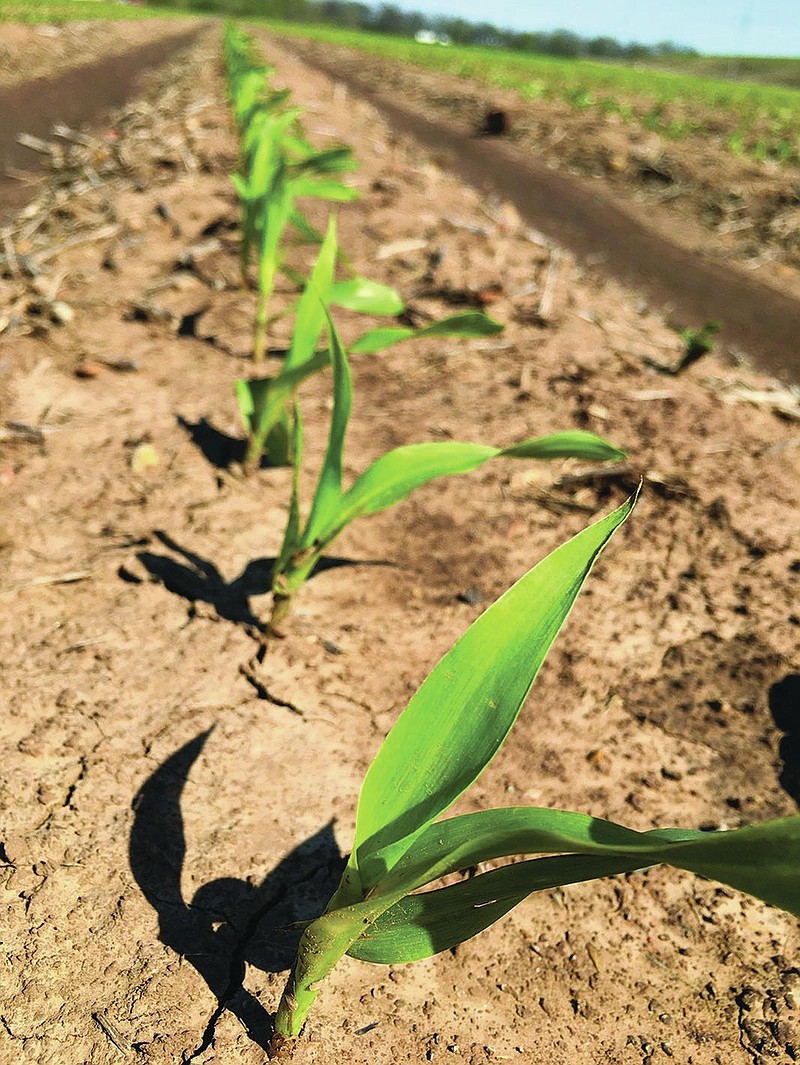Planted acreage for all major commodity crops fell from growers' stated planting intentions in March, according to a report issued June 30 by the U.S. Department of Agriculture.
Scott Stiles, extension economist for the University of Arkansas System Division of Agriculture, said the across-the-board drop came as a surprise.
"When you tally up the March-to-June difference for all crops -- soybeans, rice, corn, cotton and peanuts -- June acres are 155,000 less than March intentions," Stiles said. "You'd think with the wet April conditions that soybeans would have been the beneficiary and come in higher than the March estimate.
"We had historically strong crop insurance guarantees this spring," he said. "As planting for our earlier crops got pushed against the final planting dates, it's likely we had some acres go to prevented planting."
The data from the June 30 Acreage report were derived from surveys conducted during the first two weeks of June.
While Arkansas commodity acreage did fall from stated intentions, two major crops -- soybean and cotton -- rose from 2021 planted acreage.
"Rice, corn and peanuts were all lower," Stiles said. "There was comparatively good price strength this spring across all commodities. Corn and soybean prices were at the highest levels since fall 2012, and cotton and rice prices were the highest since 2011.
"Sharp increases in fertilizer and fuel costs over the past year impacted corn and rice budgets most," he said.
SOYBEAN
Arkansas soybean acres also fell slightly short of reported March intentions at 3.2 million acres, but still represent an increase of approximately 160,000 acres over 2021.
Much of the nation's soybean planting remains in the "estimate" stage because of slow going in states such as Minnesota, North Dakota and South Dakota, where wet conditions have slowed planting progress. About 15.8 million acres of the estimated crop remain to be planted as of late June, according to the report.
"As of June 12, USDA's National Agricultural Statistics Service indicated we still had about 9% of soybean acres in Arkansas left to plant," Stiles said. "We may see some acreage adjustments when the Farm Service Agency starts reporting certified acres in August."
Nationally, planted soybean acres rose about 1% to an estimated 88.3 million acres.
PEANUTS
While planted acreage for all major commodities in Arkansas was at least slightly lower than reported intentions in March, peanut growers reported the most significant drop in acreage, falling more than 14% from 35,000 planned acres to 30,000 planted. In 2021, Arkansas growers planted 36,000 acres of peanuts.
Travis Faske, extension plant pathologist and acting peanut agronomist for the Division of Agriculture, said the drop in acreage didn't surprise him.
"As cotton acreage increases, the peanut acreage is the inverse, typically," Faske said. "Some reductions were due to rotation and others to more competitive prices in cotton and soybean."
Nationally, peanut acreage fell about 3%, to 1.54 million acres.
CORN
Despite recent surges in grain commodity prices, planted corn acreage fell to 710,000 acres from 2021's 850,000 acres, likely owing to significant rises in input costs, especially those of fertilizers.
Jason Kelley, extension wheat and feed grains agronomist for the Division of Agriculture, said this year's corn acreage was unsurprising.
"Arkansas producers cut some corn acres due to fertilizer prices, but weather delays also resulted in late planting that trimmed some acres from earlier intentions," Kelley said.
Nationally, planted corn acreage fell about 4% to 89.9 million.
RICE
Arkansas planted rice acreage fell slightly from 2021, falling about 60,000 acres from last year's 1.2 million acres and marking the lowest total rice acreage for Arkansas since 2013.
Jarrod Hardke, extension rice agronomist for the Division of Agriculture, said overall rice acreage fell in line with his expectations.
"The small surprise was how low medium-grain acreage was as a part of that," Hardke said. "Market demands suggested we would increase medium-grain acres, but instead we decreased.
"Acreage estimates were a big target throughout the winter and spring," he said. "In December and into January it looked like 1.3 million acres were possible, before eroding with input costs and planting delays, which even reached the point of questioning if we would reach 1 million. Planting conditions and prices then improved to open the door to us exceeding 1.1 million."
Nationally, planted rice acreage fell to 2.3 million acres from 2021's 2.5 million.
COTTON
Arkansas planted cotton acreage was slightly less than March intentions indicated, but at 500,000 acres, represents a bump from 480,000 acres in 2021.
Bill Robertson, extension cotton agronomist for the Division of Agriculture, said the state's actual planted cotton acreage could exceed the USDA survey data.
"We have lots of first-time producers with 1,800 acres or so to justify the cost of a picker," Robertson said. "New producers are bringing acres up. A lot of this is in White, Jackson and Woodruff counties.
"The last couple years have been hard on southwest Arkansas growers trying to get seed in the ground," he said. "I think they had a much better window for planting this year. I figure they got a lot of what was intended to be planted in the ground. This will bring our acres up."
Robertson said some Arkansas growers are planning on planting cotton behind wheat, which will likely bring cotton acreage up still further.
"I wouldn't have been surprised to see the NASS acres to be close to 550,000 acres," he said.
Nationally, planted cotton acreage is up 11%, to 12.5 million acres.
To learn about extension programs in Arkansas, contact a local Cooperative Extension Service agent or visit www.uaex.uada.edu. Follow the agency on Twitter and Instagram at @AR_Extension.
Ryan McGeeney is with the University of Arkansas System Division of Agriculture.
